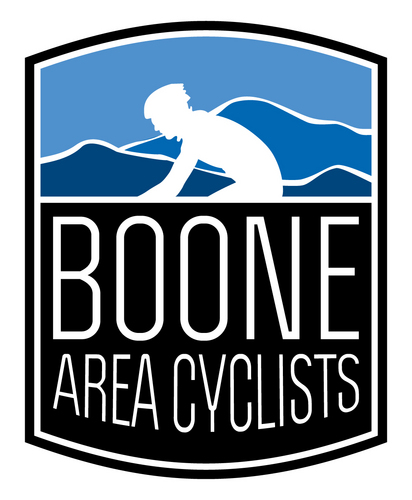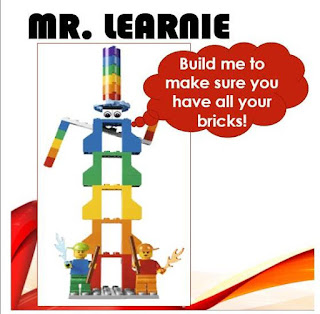I'm participating in the MTBoS blog challenge called Blaugust. If you want to see a full list of the bloggers participating in Blaugust, click on the image above. My goal is to blog once per week for the month of August, then to continue blogging weekly throughout the school year. I've got a lot to write about from this summer and about the upcoming school year but I'm still trying to process it all, so those will be coming later...
For now I'm going to write about a few of the lessons I learned this week. On Tuesday & Thursday, I spent my day coaching at our local Kids Mountain Bike Camp which is hosted by Boone Area Cyclists and Watauga County Parks & Recreation. If you have spent any time getting to know me, you know that I love teaching kids and I love biking; being able to do both at the same time is aMaZiNg and makes my heart happy! So most would think that it would be a no brainer for me to help coach a kids mountain bike camp but it actually terrified me.
I've helped coach at mountain bike camp the past two summers and both times I've almost chickened out after agreeing to help. I do not consider myself to be an awesome mountain biker, I still consider myself to be a novice and have a lot to learn about mountain biking. I feel inadequate to help kids when I barely know more than some of them and the majority of the kids have skill sets higher than my own. Plus the camp is held at Rocky Knob Park, where I had a freak accident in April 2017. Even though I've rode the trail multiple times since that day, I definitely have anxiety about being on that trail. However, both summers have proven to be such a great experience for me and I'm so glad I didn't chicken out!
This summer (just like last) I willing volunteered to work with the beginner shredders - these are kids that may or may not have been on trails before but do have experience with riding bikes. We spent our days working on handling skills and getting comfortable with maneuvering on a trail. With these kids we spend a lot of time at the pump track and then get up on our beginner trail called "Keen-dergarden." By the end of the week, the majority of the beginner group is able to move on to the next trail but there is always one or two that need extra practice with this trail. I don't know if it's because I enjoy rejoicing in the small things or because I can actually teach them something but I've discovered that this is the group that I love to work with.
This week, I worked with the group on Tuesday and noticed a rider was not at the level of the others in the beginner shredder group, so when I arrived on Thursday I gladly volunteered to work with him. We try not to single out the kids, so we either divide up the groups ahead of time or have options and let the kids decide which group they want to join. To divide up the groups on Thursday morning, we let the kids choose their groups and I offered a Pump Track & Keendergarden group - to my surprise five kids wanted to be with me and my NICA student coach, Ethan. (He will be a freshmen at my school in the fall and I so hope to be his math teacher one day!) Ethan and I quickly realized that our group of five was made up of 4 kids that could easily ride the trails but wanted a chill day and the 1 kid that was not at the level of others.
Ethan & I decided that we were going to need to split into two smaller groups and I figured at this point I'd be spending my day with the one kid. I was fine that that because I knew that I would work with him on small sections of the trail and we wouldn't move on until he could ride each portion. My goal was to get him comfortable riding his bike on the trail. When it came time for the kids to choose which mini-group they wanted to be a part of, a kid spoke up and said "I don't care, I just want to ride with my friend." I was excited to have a second kid to work with but I was a little hesitant. I hate to stay it but in my mind I kept thinking, "Once we get up on the trail you will realize how long this will take and that we really won't be riding, you're going to regret this decision." Little did I know that I was about to learn a lot about friendship from this kid and I'm so thankful that I didn't discourage him from joining his friend.
We ended up working on 3 small sections on the Keendergarden trail - two switchbacks, one to the left and one to the right, and a small section that has a little (3' long) wooden bridge. We probably spent 30 minutes at the first switchback and 20 minutes at each of the other sections; at each section the same thing would happen. At first, the friend would be leading our little group and he would do the section. Behind him was the kid that was needing help and would try to do what his friend did. I was behind him talking him through what he should be focusing on. When the kid got to the point where he had to come off the bike, we would stop and all get off of our bikes. I would then talk through what to be looking at during each part of the section, where his bike should go, and then we'd walk the section as if we were on our bikes.
At this point, his friend would grab his back and return to the beginning of the section. He would ride his bike to demonstrate what it should look like while the other kid and I would stand off trail and watch. Then the kid that was needing the help would go to his bike and try. I would be coaching him and his friend stood near me, cheering him on. After each failed attempt his friend would go to where he was, offer a smile, and give him a little word of encouragement. Such as: "You are doing so great!" "You almost made it this time, I know you'll get farther next time! " Don't worry, this is hard but I know you can do it!" Then I'd have the kid talk through what went wrong and what he needed to do in order to ride the section and he'd try again. We would repeat this as many times as necessary for the kid to master the section and each time, I'd stand in amazement as his friend cheered him on. But for me the best part for me was the first time the kid was able to fully ride one of the sections. His friend would scream in excitement and run to where he was and give him a high-five and tell him how proud he was of him.
This happened at EVERY. SINGLE. SECTION with no loss of genuine encouragement or enthusiasm. As we were riding down the trail to head to lunch, I realized that I want to be like this kid's friend and here are the three lessons that I will carry with me forever. I know these lessons will make me a better friend, teacher, wife, aunt, and overall person.
1. When someone is afraid, I will smile and offer words of encouragement.
2. I will celebrate someone else's victory, whether small or large, like it is my own.
3. I will choose to spend time with the people I love, even when I could be doing other things, because I simply want to be with them.
I thought that coaching at mountain bike camp would allow me to teach kids about riding bikes, which it did, but the impact I'll carry with me is far greater than what I taught kids.








































